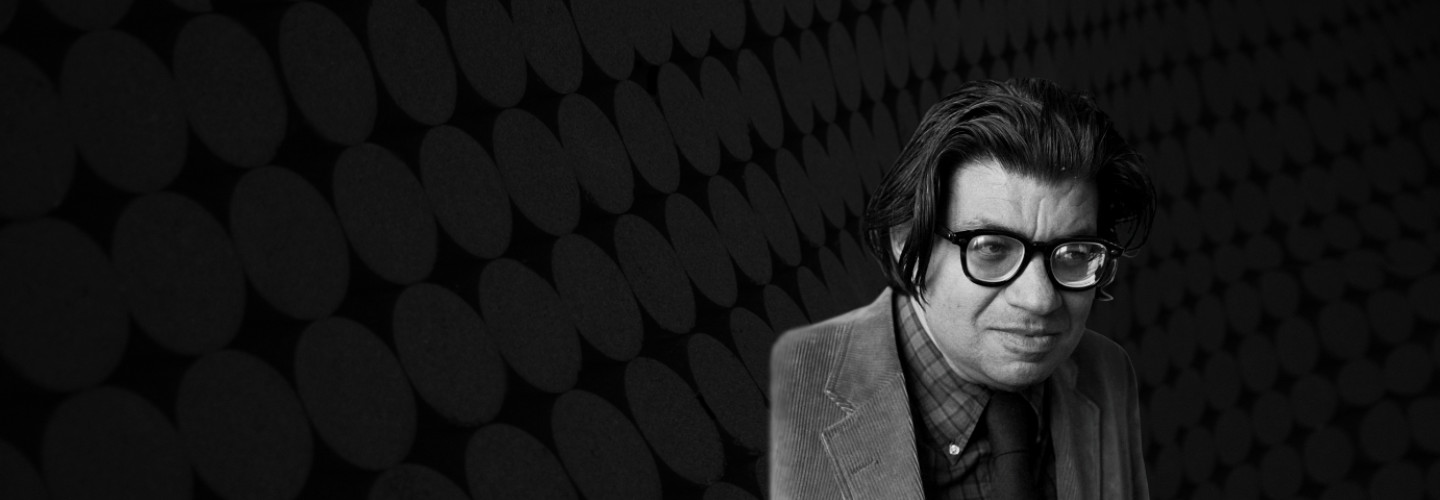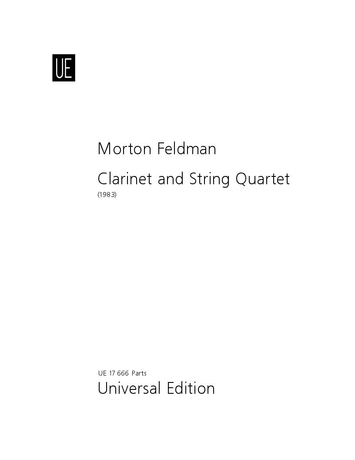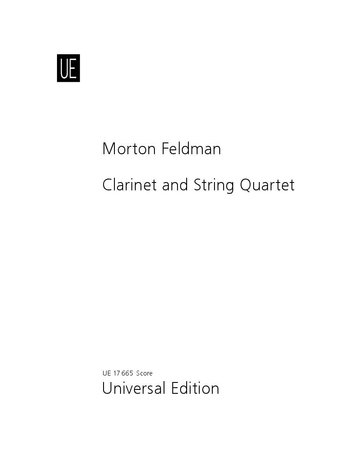

Morton Feldman
Clarinet and String Quartet
Duration: 45'
Dedication: for Alan Hacker
Solos:
clarinet in Bb
Instrumentation details:
1st violin
2nd violin
viola
violoncello
Feldman - Clarinet and String Quartet for clarinet and string quartet
Translation, reprints and more

Morton Feldman
Feldman: Clarinet and String Quartet for clarinet and string quartetOrchestration: for clarinet and string quartet
Type: Stimmensatz

Morton Feldman
Feldman: Clarinet and String Quartet for clarinet and string quartetOrchestration: for clarinet and string quartet
Type: Partitur
Audio preview
Work introduction
The painter Robert Motherwell once wrote ... “I hung [William] Baziotes' show with him at Peggy's [Guggenheim Gallery] in 1944. After it was up and we had stood in silence looking at it for a while, I noticed he had turned white. When he was anxiety-ridden, a white mucous would form around his lips – his throat must have become very dry with the emotion. Suddenly he looked at me and said, ‘You're the one I trust; if you tell me the show is no good, I'll take it right down and cancel it’. At that moment I had no idea whether it was good or not – it seemed so far out; but I reassured him that it was – there was nothing else I could do. You see, at the opposite side of the coin of the abstract expressionists' ambition and of our not giving a damn, was also not knowing whether our pictures were even pictures, – let alone whether they were any good”.
Artists, critics, and the public each had to confront these amazing new images and ask themselves: Is it art? This same insecurity, of working in an area so new there are no conventions to guide one, of creating form as one goes along so that there are no recognizable elements on which to base aesthetic judgments (i.e. comparisons), could be translated from Abstract Expressionist painting of the 1940s and '50s to the music of Morton Feldman. From the epigrammatic graph pieces of the '50s to the epic notated scores of the '80s, the question haunts us: Is it music? Acutely composed, the dramatic gestures, discomfort of form, and tension between stasis and movement are so alien to our past experience of music, and require not only a new way of listening but a new way of responding, that doubts are raised, anxiety thrives.
Such shared feelings were no doubt Feldman's strongest connection to the painters like Guston and Rothko whom he loved and identified with. As creative artists, they understood that this anxiety (arising from their need to create not only the content, but the form of their expression) was not weakness, but the result of faith, in which human doubt is inevitable. Here is the source of the sense of poignancy in their work – the almost unbearable anger and despair which riddled Rothko, Guston's frustration, the loneliness which Feldman acknowledged – and the profundity they sought, and often achieved. Feldman once remarked that in certain paintings, when perspective disappears, the meaning, the experience, is “...not confined to a painting space but rather existing somewhere in the space between the canvas and ourselves.” For Feldman, loneliness was not only a state necessitated by the physical or spiritual isolation of the artist, but one which was defined by the distance between the page of notation, the sound of music, and the listener – the difference between intention, interpretation, and understanding.
Unlike Webern, whom he respected, Feldman found beauty – security, and truth – not in the process (that is, the construction) of the composition, but in the feelings which produce the work of art, and which the work of art produces. These feelings become the transcendency of art from personal to public and back to personal again. (Just as, even for an artist as seemingly "abstract" as Mondrian, who claimed not to "see" the squares in his paintings, the idea becomes an image which in turn becomes the emotion we feel). Feldman's lack of conventional melody and comprehensible formal devices are actually the existential decisions he made, choices which were faithful to his character and spirit. The unexpected states of being (translated into feelings) we experience in his music result not from actions resembling the surrealists' free association of consciousness, but from an individual determination, a personal kind of formal restraint that made choices, took risks – leaps of faith – and eventually emerged in the later, patterned works influenced by 18th century Turkish rugs. Works from 1984, like Clarinet And String Quartet and For Philip Guston, were attempts to reconcile the "objectivity" of patterns with the "subjectivity" of Abstract Expressionism.
Though they share many of the same compositional procedures, Clarinet And String Quartet differs from For Philip Guston in that all four hours of the latter are concerned with (as the title suggests) relationships – intervallic, rhythmic, and metaphoric. Clarinet And String Quartet has its own sound, texture, and point of view. As in all of Feldman's music, simple gestures create enormous intensity; a single note – or two, three, or four combined – may be a motif, which is never developed, but which may be repeated, revised, or replaced to outline an image, and these shapes, knitted together, form the music's fabric. They may sound as if randomly connected, yet looking at the score one can see how entire passages are pieced together, sometimes through exact or altered repetition (“crippled symmetry”), or restated in retrograde. Feldman liked such mirror images, perhaps sensing a human characteristic in the reflection (in fact, the heavy reliance on two-note motifs here is reminiscent of breathing, in and out); they never appear mechanistic or systematic. Accuracy of detail or precise design were not relevant to Feldman's feelings – imperfections reveal a human touch, the presence of fantasy and fallibility; he sought to distinguish the complexity of moods implicit in the images he heard, and which he also recognized in sources as different as the paintings of Mondrian, Rothko, Guston, and the rugs he admired. But there's a danger in over-analyzing the particulars of Feldman's methods of organization – basing one's response on the level of understanding instead of the experience itself, confusing the effect they have with the process which inspired them.
Perhaps surprisingly, I find that Clarinet And String Quartet and the epicritical Two Pieces For Clarinet And String Quartet composed twenty-three years earlier have much in common. Both are intimate, introspective, transparent, and concise, and despite the earlier work's delicacy and brevity, their differences are of surface, not content and certainly not feeling. Though their means are unalike, they illuminate key issues in Feldman's music: commitment, integrity, and wonder, turning anxiety into discovery, emotion into art, and art into emotion.
Art Lange
November 1994
